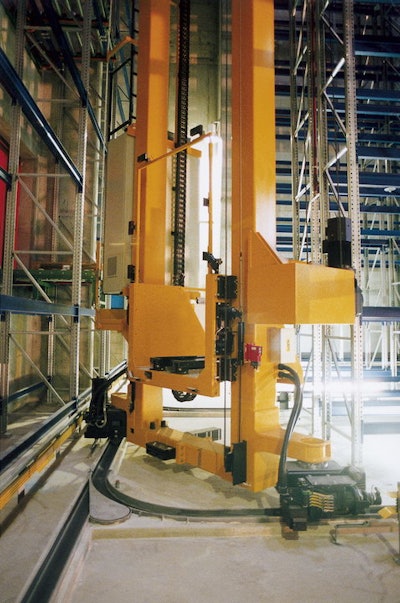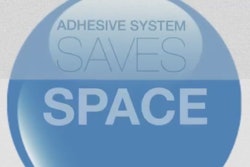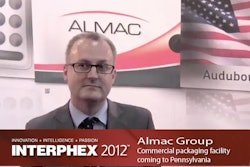
Catalent Pharma Solutions is a market leader for drug development and delivery solutions for pharmaceutical and biotechnology companies. From the manufacturing and development of softgel capsules to modified-release oral solids to prefilled syringes to inhalation, Catalent has an array of development and delivery platforms to help pharmaceutical companies bring more products to market faster.
Supporting these technologies is Catalent’s extensive network of manufacturing facilities that include more than 20 sites across five continents and a multitude of countries. Select Catalent facilities are designated to provide commercial packaging services to the healthcare industry. From these locations, the company fills tablets, powders, and liquid formulations into bottles, pouches, and blister strips.
Catalent’s Philadelphia facility, for example, provides primary package design and engineering to filling, assembly, labeling, and secondary packaging. Using innovative packaging systems and advanced, time-saving technologies such as over-encapsulation, high-speed blistering, high-speed in-line sealing, automatic labeling, and turnkey track-and-trace, Catalent delivers efficient packaging and supply chain products for its clients. The Philadelphia site specializes in cold chain biotech packaging, as well as bottling, blistering, and pouching, and has invested upwards of $7 million during the past 24 months for upgrades in facility and technology.
To support the Philadelphia packaging facility, the plant leverages its automated warehousing and distribution. Utilizing a high-bay warehouse equipped with an automated storage and retrieval system (ASRS) and serviced by versatile aisle-changing stacker cranes, Catalent is able to move its products from end-of-line packaging into storage, and then out for shipping to its clients or distribution centers with efficiency and flexibility.
“Flexibility and efficiency are two critical features of the automated warehouse solution we utilize,” says Justin Smith, director of supply chain for the Philadelphia facility. “We offer various packaging solutions, and have advanced technological packaging capabilities that demand a flexible and efficient material storage system. This is a high-volume packaging facility. We place a lot of confidence in our automated systems to be able to handle the continuous flow.”
Products coming from any one of the plant’s 63 packaging suites are boxed, labeled, palletized, shrink-wrapped, and then moved by lift truck to an ASRS induction conveyor for storage in the high bay. The 54-ft-high, high bay with its five aisles hold 19,000 pallet locations stacked nine-high.
A majority of the Philadelphia plant’s packaged product is stored in the high-bay warehouse system at ambient temperature. The site also has three on-site validated 2° to 8° C refrigerators (880 pallet locations) to support cold chain activities, which represent a specialized capability of the facility. Additionally, the plant has a Class II vault to support the storage of controlled drugs.
Aisle-changing cranes facilitate flexibility
The high bay employs three aisle-changing, automatic stacker cranes, designed and built by LTW Intralogistics. Most high-bay warehouses use ASRS cranes that are only capable of travelling in one aisle. The limitation of a dedicated-aisle crane is that one crane is required to service each storage aisle in a warehouse. As cranes are a major part of the cost of high-bay warehouse solutions, reducing the numbers of cranes can result in significant savings. The number of stacker cranes can be matched to the warehouse throughput needs instead of to the number of aisles, therefore reducing capital investment and operating costs.
The cranes operate within a set of top and bottom rails, permitting full-pallet and layered-pallet inventory to be moved quickly, safely, and precisely within the high-bay warehouse environment, depositing, storing, and retrieving unit loads from the 19,000 defined storage locations. The ability to switch aisles increases redundancy in the event that a crane would go out of service. Each pallet position then becomes 100% accessible.
“These cranes can go anywhere in the high bay,” Smith says. “Instead of running and maintaining five dedicated-aisle cranes, our three aisle-changing cranes can accomplish the precise throughput we need. We keep track of our pallet throughput on a 24-hour basis. We have the ability to handle 630-plus pallet moves in a 24-hour period.”
Unlike some aisle-changing cranes that are limited in their aisle-changing flexibility, Catalent’s stacker cranes have been designed with efficient aisle-changing capabilities. When the crane gets to the end of an aisle, it can then travel perpendicular to the aisle and enter another aisle to continue storing and retrieving pallets. The crane smoothly rotates around the end of the aisle on a curved 12-ft radius track, without leaving the track. It makes for an easy and fast transition between aisles. The specialized switch-track requires no transfer mechanisms, supervision equipment, or costly and time-consuming maintenance, problems that plagued earlier aisle-changing cranes.
Continuing performance
The Catalent aisle-changing cranes are fully A/C powered, and carry pallet payloads up to 2,000 lb. Traveling at vertical speeds of 325 ft/min, and achieving horizontal travel speeds of 787 ft/min, their high-speed PLCs monitor the precision movements of the cranes. They utilize photo-eye and bar-code technology to direct their movements in the high bay and the cranes’ movement of pallets.
“We depend on our automated packaging and warehousing systems, which operate at a high level of performance at all times,” explains Smith. “The LTW aisle-changing cranes were installed in 1999 and are still running very well,” says Smith. “We have a routine maintenance schedule to ensure the cranes continue to operate at a high level of performance. The switch-out track on these cranes makes it very convenient and easy to move the cranes offline and perform maintenance.”
Article written by Patrick Roberts, who writes on logistics automation.






















